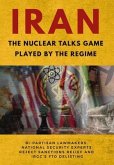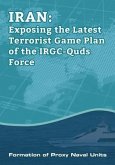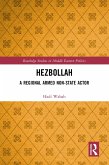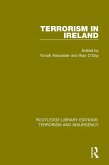In that the clerical regime in Iran lacks the military capability to build advanced weaponry, it has resorted to the production of weapons and equipment that can be used for terrorist and war-mongering activities intended to advance its policy of creating crises and fueling terrorism. One such weapon, in the production and export of which the regime has invested heavily in recent years, is a variety of drones, or unmanned aerial vehicles (UAVs).
This manuscript offers a review of the most important organs of production, use and export of UAVs by the regime, and in particular the Islamic Revolutionary Guard Corps (IRGC).
In the first chapter, entitled "Production of UAVs," the history of the IRGC's production of the earliest types of UAVs during the Iran-Iraq War is reviewed, after which the Quds Air Industries, affiliated with the Air Industries Organization in the Ministry of Defense, and 7 other related bodies became involved in such production. Next, the ways in which equipment is smuggled from abroad and the production of various parts are explained. A variety of UAVs used by the IRGC to ignite war and terrorism are then introduced.
The second chapter, entitled "Utilization of UAVs," offers a brief overview of how the IRGC has used drones historically, and outlines the various organs that employ UAVs. Among them is the UAV Command under the IRGC Aerospace Force, which has various UAV centers across Iran. It is the most important entity for training and using UAVs. Other military and law enforcement agencies that utilize UAVs are also named in this chapter.
In the third chapter, entitled "Using UAVs to incite war and terrorism," the utilization of UAVs for the advancement of terrorist policies and regional meddling by the IRGC's Quds Force is discussed. The Quds Force Intelligence and Training directorates have dedicated certain sections to the production as well as training and export of UAVs to other countries in the region. The IRGC's drone command center was directly involved in the attack on the Saudi Aramco oil refinery. The IRGC also continues to export drones to Syria, Iraq, Lebanon and Yemen. UAV parts are flown to these countries in IRGC planes as well as shipped through land crossings, and are subsequently assembled in the host countries. Local mercenaries from these countries receive training at IRGC Aerospace Force locations in Iran.
The findings make clear that the reason for the IRGC's focus on the production and use of drones lies in the fundamental military weaknesses of the regime when it comes to modern warfare. On the other hand, the IRGC has used drones, much like its missile program, as an instrument to instigate conflict and terrorism in the region in order to keep the clerical dictatorship in power.
This manuscript offers a review of the most important organs of production, use and export of UAVs by the regime, and in particular the Islamic Revolutionary Guard Corps (IRGC).
In the first chapter, entitled "Production of UAVs," the history of the IRGC's production of the earliest types of UAVs during the Iran-Iraq War is reviewed, after which the Quds Air Industries, affiliated with the Air Industries Organization in the Ministry of Defense, and 7 other related bodies became involved in such production. Next, the ways in which equipment is smuggled from abroad and the production of various parts are explained. A variety of UAVs used by the IRGC to ignite war and terrorism are then introduced.
The second chapter, entitled "Utilization of UAVs," offers a brief overview of how the IRGC has used drones historically, and outlines the various organs that employ UAVs. Among them is the UAV Command under the IRGC Aerospace Force, which has various UAV centers across Iran. It is the most important entity for training and using UAVs. Other military and law enforcement agencies that utilize UAVs are also named in this chapter.
In the third chapter, entitled "Using UAVs to incite war and terrorism," the utilization of UAVs for the advancement of terrorist policies and regional meddling by the IRGC's Quds Force is discussed. The Quds Force Intelligence and Training directorates have dedicated certain sections to the production as well as training and export of UAVs to other countries in the region. The IRGC's drone command center was directly involved in the attack on the Saudi Aramco oil refinery. The IRGC also continues to export drones to Syria, Iraq, Lebanon and Yemen. UAV parts are flown to these countries in IRGC planes as well as shipped through land crossings, and are subsequently assembled in the host countries. Local mercenaries from these countries receive training at IRGC Aerospace Force locations in Iran.
The findings make clear that the reason for the IRGC's focus on the production and use of drones lies in the fundamental military weaknesses of the regime when it comes to modern warfare. On the other hand, the IRGC has used drones, much like its missile program, as an instrument to instigate conflict and terrorism in the region in order to keep the clerical dictatorship in power.
Dieser Download kann aus rechtlichen Gründen nur mit Rechnungsadresse in A, D ausgeliefert werden.









